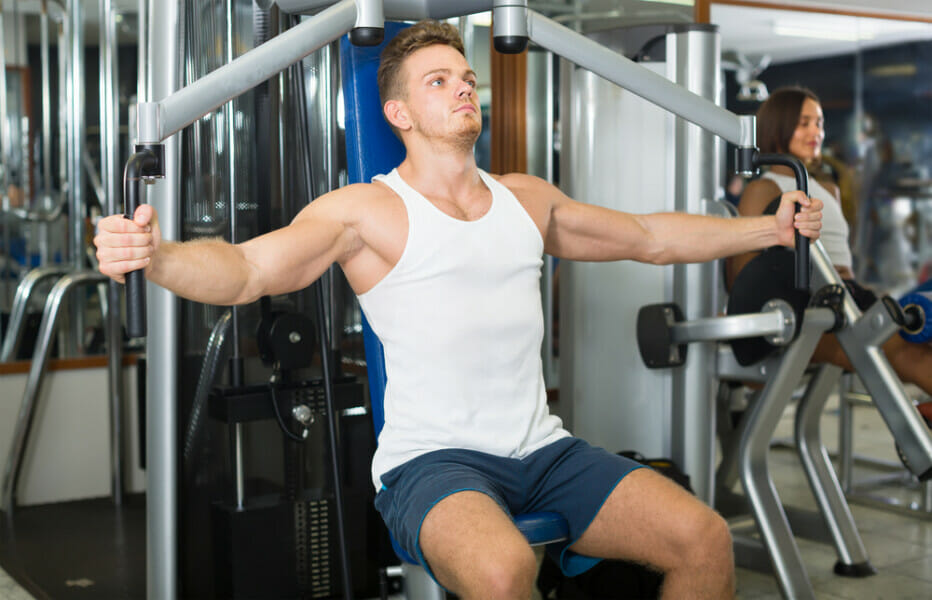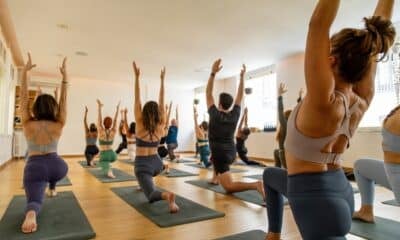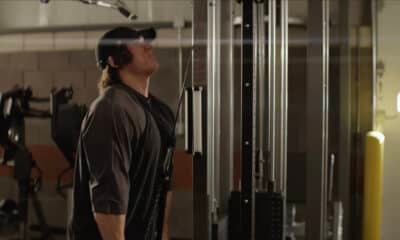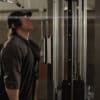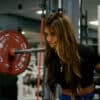The Ultimate Guide to Mastering Chest Flies for Better Posture and Improved Range of Motion
Weightlifting is an excellent way to transform your body, regardless of your gender or experience level. Chest exercises can have a positive impact on your posture and upper body flexibility. If the idea of using heavy barbells and plates is daunting, don’t worry, there are other options available, such as chest flies.
What are chest flies?
Chest flies are an upper body workout that targets the chest, shoulders, and core muscles. This exercise involves lowering weights out and down towards the sides before raising them back up to the starting position. Chest flies can be done lying down on a bench or mat with dumbbells or standing upright using a cable machine like cable crossovers.
While there are various ways to perform chest flies, Orangetheory coach Erin De Groot recommends beginners start on a bench or floor with dumbbells to focus primarily on the fly movement rather than engaging the entire body as other variations may require.
The benefits of chest flies
Before diving into the technique of chest flies, let’s explore why this exercise is beneficial. Dumbbell chest flies are effective for strengthening the chest and building pectoral muscles. They are adjustable by varying the weights, making them suitable for all fitness levels.
Whether your goal is to build muscle mass, enhance posture, or improve your push-up performance, chest flies can help you achieve your desired results. This exercise is often included in Orangetheory classes to support overall upper body strength.
The mechanics of chest flies are advantageous as they open up the chest and shoulder muscles, promoting strength in the upper back. In today’s sedentary lifestyle with prolonged sitting and hunching over screens, chest flies can help combat poor posture. The squeezing motion of the shoulder blades during chest flies, known as scapular retraction, contributes to improving posture and core stability, reducing the risk of back pain.
How to perform chest flies
Note: Whether you’re doing dumbbell chest flies on a bench or the floor, the steps are the same.
1. Select your weights
Choose weights that allow you to perform 8-10 reps comfortably for 2-3 sets. Start with lighter weights and focus on proper form.
2. Lie down
Lie flat on your back with a dumbbell in each hand. Keep your head up and chin untucked.
3. Begin the lift
Extend your arms above your head with your dumbbells facing each other.
4. Lower slowly
Maintain a slight bend in your elbows as you lower the weights out and down towards your chest.
5. Raise to start
Return to the starting position by pressing the weights back up towards the ceiling, keeping your palms facing each other.
Watch the video to see a demonstration of chest flies from the floor:
Common mistakes to avoid with chest flies
Like with any weightlifting exercise, there are important things to keep in mind to ensure safety during chest flies.
1. Using too heavy weights
Select a weight that allows you to maintain control and a slight bend in your elbows. Avoid weights that are too heavy, as they can compromise your form and lead to injuries.
It’s essential to choose a weight that challenges you without causing tension in your neck or shoulders. Opt for a weight that feels comfortable to prevent recruiting additional muscles and risking injury.
2. Maintaining proper form
Keep a slight bend in your elbows throughout the exercise to focus on the chest fly movement rather than turning it into a chest press.
3. Controlling the tempo
Slow down the movement to maximize the effectiveness of chest flies. Lower the weights for three counts and raise them for one to two counts, maintaining tension in your muscles.
4. Remember to breathe
Don’t forget to breathe while performing chest flies. Inhale as you lower the weights and exhale as you raise them, syncing your breath with the movement to maintain a steady rhythm.
There are different ways to do chest flies, such as using dumbbells or cable machines. Personal trainer Bianca Vesco suggests selecting the variation that suits your body and goals best. Dumbbells can help improve overall strength and stability by engaging more muscles, while cable machines offer a controlled environment for focusing on chest strength. Choose the option that feels most comfortable and effective for you.

